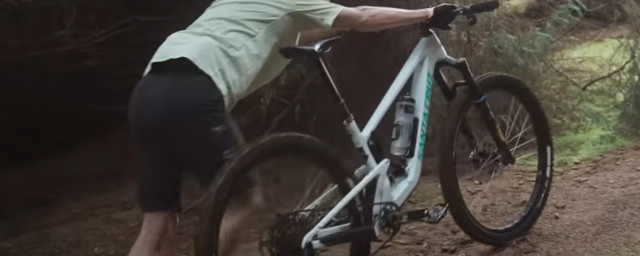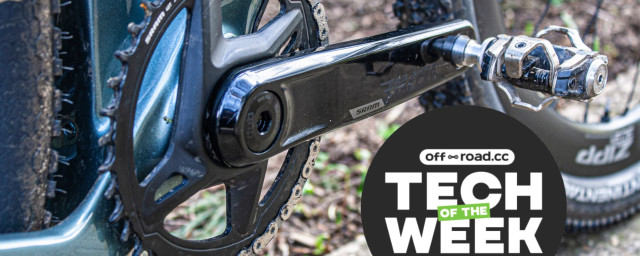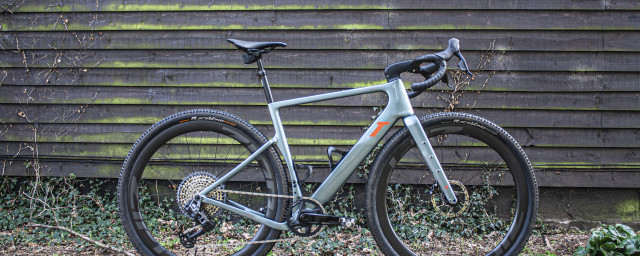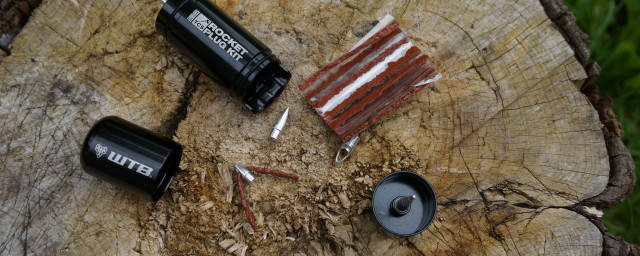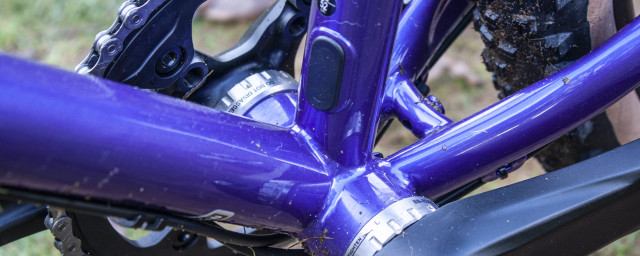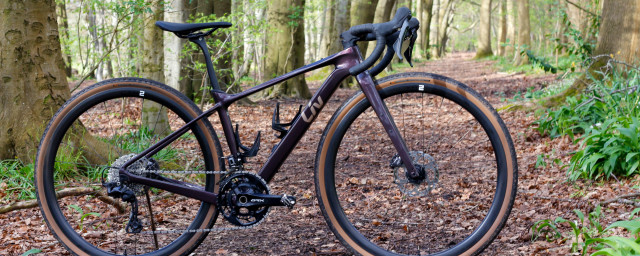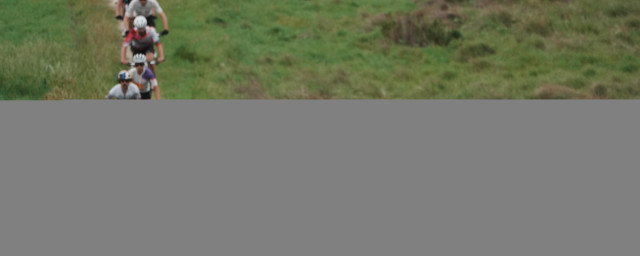As one of the contact points on your bike, the best mountain bike pedals represent one of the most vital components and, for good reason. They're crucial to everything from climbing to cornering so you must find what pedals work best for the riding you enjoy. This buyer's guide will give you the low down on the best mountain bike pedals so you know your flats from your clipless.
A brief look at the history of the mountain bike pedal will show just how much the best mountain bike pedals have evolved. At the very start, off-road riders used flat-platform pedals with a body that offered some form of grip. These designs looked like a hunting trap and, if you were unfortunate enough to suffer a slip of some sort, there would be a similar amount of blood, too.
A gradual evolution in flat pedals followed leading to features like concave pedal bodies, replacement pins and improved mud and ground clearance. This also led to flat pedal shoes with soft and sticky soles to increase the bite into the pedal pins and thus grip. Flat pedals are a great option for developing your bike skills and body positioning for beginners.
Riders - especially those of the cross-country mountain biking variety - began favouring all-out performance and power transfer and opted to go the toe clip route; these attached to the main pedal body and secured your feet to the bike somewhat permanently. It gave riders a more equal spread of power throughout the entire pedal stroke thanks to the push and pull of the pedal arc. The off-road clipless pedal concept would eventually evolve into the Shimano Pedaling Dynamics or as it's known; the SPD pedal which did away with the need for toe clips and straps (hence the clipless name).
It's a lot to take in if you're a beginner but we've got you covered. Skip to the bottom of the page to read our guide to choosing the best mountain bike pedals. We'll also cover the pros and cons of both styles later in the guide. This will help answer some of the most common questions and steer you in the right direction.
For a deeper look at the top flat pedals, here's the best MTB flat pedals.
Best mountain bike pedals - clipless pedals
- Look X Track EnRage
- Hope Union TC
- Crankbrothers Eggbeater 3
- Time Speciale 12
- Hope Union RC
- HT Components M2
- Crankbrothers Candy 7
- Crankbrothers Mallet Trail
Look X Track EnRage
£65
The X-Track En-Rage adopts a standard Shimano SPD mechanism, so although the pedals are supplied with Look’s X-Track own cleats, standard SPD cleats from other brands are compatible.
While there is plenty of support from the caged design, the Look X-Track En-Rage pedal is missing any pins for a real substantial bite and only has small serrations on either side of the cleat, so the grip level isn't the best.
The Look X-Track En-Rage pedal is durable and designed to go the distance. While they're not the lightest in the segment, there is much to like for the price. For fans of a float-gree pedal feel these come highly rated.
For all the details on the Look X-Track En-Rage pedal, read our review.
Hope Union TC
£150
The Hope Union TC model is a long-awaited addition to the brand's pedal line-up. It’s designed to be a large platformed trail pedal with impressive build quality as you would expect from the team at Hope. While only compatible with Hope's cleats, the pedal offers loads of pin adjustment for a great level of grip, easy engagement, and a solid feel when clipped in it's a tough pedal not to like.
The stainless steel clip mechanism resembles Shimano but is different in reality. Both jaws are sprung and are wider apart, meshing with a fatter cleat. The fact that it's only compatible with Hope cleats is forgivable, too, thanks to the range of bits and pieces included in that asking price.
This pedal offering from Hope is priced at the premium end of the market. The great on-trail performance and exceptional craftsmanship paired with the use of quality materials more than warrant digging deep for a pair of Hope Union TC pedals.
If you are interested in learning a bit more, read our Hope union TC pedals in-depth review.
Crankbrothers Eggbeater 3
£130
The Eggbeater has been part of the Crankbrothers range since it started making pedals and there’s a reason these have been around almost unchanged for so long. The Eggbeater 3 is light due to its zero platform and the pedal is easy to use with the unique and ingenious four-sided design.
For riders who like to tough it out during the grim Winter months, you will be pleased to read that the Crankbrothers Eggbeater 3 pedal has the best mud-shedding performance of any clipless pedal you can buy.
The lack of a platform does make shoe choice more important than usual. If you miss the platform support from your pedals, then Crankbrothers also offer the Candy model with the slightest weight penalty.
Love what you see? Find out how the Crankbrothers Eggbeater 3 pedal scored during our in-depth review.
Time Speciale 12
£260
The Speciale 12 uses Time’s proprietary ATAC cleat and a dual-sided, two-bar spring engagement, and gives riders a choice of either a 13- or 17-degree release angle. This makes clipping in a doddle and the angle of engagement tends to squeeze any debris out of the way.
The platform is machined from 6061 aluminium and, while the result is pretty light (404g for the pair), strength and durability seem high. Despite the battle scars from the tough test period, there is zero play and the Speciale 12s are still silently spinning like new.
Read everything you need to know if our comprehensive test of the Time Speciale 12 pedals.
Hope Union RC
£160
Hope’s Union RC clip pedals are aimed for cross-country mountain biking, cyclo-cross, and gravel riding. Available in six colours to match your steed, and Hope offers a unique mechanism housed in a dual-sided, beautifully CNC machined body. Inside they spin on three bearings, a self-lubricating bush and a titanium axle. They are fully serviceable, can be accessed with regular bike tools, and come with a two-year warranty.
As with the rest of their pedal lineup, the unique Hope cleat design makes them incompatible with any other system on the market. That said, the build quality and durability are unsurpassed. With silence as their middle name, you will suffer from no creaking or groaning. Yes, the blue anodising is starting to wear, but importantly the mechanism still looks fairly fresh after six months of use and it continues to work as new on both sides of each pedal.
Read our review of Hope Union RC pedals to learn more about how they performed during testing.
HT Components M2
£100
Built for cross-country racing, gravel and cyclo-cross, the HT Components M2 pedals are lightweight and offer several float options. Used by riders such as Nino Schurter, these pedals are easy to use and make for a great way of learning how the clipless system works.
They're completely user-serviceable and even supplied with a 9mm socket to help with the job. On top of that, there are two sets of cleats in the box and two sets of plastic shims of different thicknesses. These pedals scored well thanks to their low weight, minimal friction and all-out adjustability.
Check out the full HT Components M2 clipless pedal review for more details.
Crankbrothers Candy 7
£180
Compared to the minimalist-looking Eggbeater, the Candy is the next step on the platform size scale. Built to excel in all riding apart from the gravity-fed kind, the Candy 7 boasts Crankbrothers' excellent mechanism complete with a small platform to rustle up some support. This model of the Candy gets 17-4PH stainless steel wings and these pedals rotate around Max Enduro bearings.
The open mechanism lends itself well to mud-clearing duties and their ease of servicing is a real trick up the pedal's sleeve. It's proven to be one durable pedal and cleat engagement is as easy as it gets in the segment.
For a closer look at these pedals, read our Crankbrothers Candy 7 clipless pedal review.
Crankbrothers Mallet Trail
£180
Another set of Crankbrothers pedals in this guide must mean that the brand is onto something. The Mallet Trails get an even larger platform for more support on your trail or gravel bike.
These get that Eggbeater mechanism, too, and because its platform is larger, these pedals offer the ability for further tuning thanks to the black plates that can be swapped for thinner or larger replacements for greater support and traction. Also stretching further into the full-platform realm are the two adjustable pins on each side.
We appreciated the engagement and improved support on both gravel and trail mountain bike rides.
To learn more about this pedal, check out the Crankbrothers Mallet Trail clipless pedal review.
Best mountain bike pedals - flat pedals
- PNW Components Range Composite
- Gusset Slim Jim CNC
- PNW Components Loam
- DMR V11
- Race Face Atlas
- Deity TMAC
- Deity Deftrap
- DMR Vault Mag
PNW Components Range composite
£39
The PNW Range Composite is the budget-friendly sibling of the brand's Loam pedal. Through testing, the pedals have proven to be a reliable bang-for-buck option as grip, feel and durability are excellent.
The Range pedal shares the same shallow convex shape with its pricier stablemate the Loam; only the 22 steel non-adjustable pins here aren’t as tall. Not to worry though, paired with the shape of the pedal body the foot wraps nicely around the pedal while forcing the pins deeper into the sole for good levels of grip.
If the convex shape works for you, then this is a flat pedal you will want to try. The grip and durable performance are not short of impressive for the cash.
Our full review of the PNW Range Composite pedal covers all the specifications and performance merits in detail.
Gusset Slim Jim CNC
£70
Riding the concave shape combined with the pins and relatively low profile offers plenty of purchase and allows the midsole of your shoes to sink into the concave area. The Slim Jims feel solid, able to stand up to some abuse and they clear mud well. Accessible bolts make it easy to pull the pedal apart and it is just as simple to swap out bent pins.
The Slim Jims are great alloy pedals. This latest iteration is wallet-friendly, tough as old boots with a limpet-like grip. They will last long but having an easily serviceable pedal with plenty of aftermarket replacement parts means that when they do eventually feel tired you can have them running like new again.
Read the complete review of the Gusset Slim Jim CNC pedals.
PNW Components Loam
£89
The Loam Pedals are PNW Components' first go at the flat-pedal concept. PNW Forged and CNC’d the 6061 aluminium and have not only made a beautiful job of it, they feel substantial and shrug off pedal strikes with ease. The pedal body has a convex shape with a concave pin layout, meaning the 22 replaceable pins are taller on the front and rear than the middle. It might not be to everyone's taste but regardless of the shoes their stiffness and grip have been consistent and plentiful thanks to those strong and lengthy pins.
PNW’s Loam pedals are mega grippy and impressively durable; it’s great to see that they have considered servicing, too. If you’re looking for wallet friendly aluminium-bodied pedals with a lifetime warranty, these should be on the top of your list.
Check out our PNW Components Loam pedal review to read why they impressed us.
DMR V11
£55
DMR has been in the flat pedal game for a long time. The V11 gets the same pedal platform shape as the metallic Vault pedal. It's decently thin and has nicely chamfered edges to reduce the likelihood of pedal strikes and the large pedal body that is slightly concave in both the fore and aft and side to side to allow your foot to sit into it.
The internals are the same as the Vault, with a DU bushing on the inner axle and a single bearing at the end spinning on a steel axle. A rubber seal on the inside and a screw-on cap on the outside keep the weather out.
These superb pedals mirror the performance of their premium brothers at less than half the price. They have loads of grip and support with proven bearings and a damage-resistant platform design.
Check out our five-star review of the DMR V11 pedals.
Race Face Atlas
£130
The Race Face Atlas is a premium flat pedal offering. It is beautifully sleek with a low-profile design and comes in five colours alongside the traditional black. It's not just pretty looking though; as it packs a tough and well-thought-out design – it is fully rebuildable.
The Atlas pedal is so grippy it boosts rider confidence with a concave platform and 10 pins per side. It's a worthy choice for gravity-focused riding and excellent for all kinds of trail riding.
The excellent grip, low height, tough spindle and smooth edges make the Atlas a modern classic.
Our full review covers all the details of the Race Face Atlas pedals.
Deity TMAC
£150
Built with 6061 T6 Aluminium, the TMAC has the largest pedal platform Deity has produced. The large platform and pronounced concave profile go a long way to deliver a rock-solid trail connection coupled with excellent performance.
The TMACs give a super solid feel and hold your feet over roots and rocks to provide excellent trail feedback. This gifts the rider confidence to push against them when airborne and also for bunny hops.
The build quality is good; the combination of sealed bearings and DU bushings keeps the pedals spinning reliably. They are serviceable when you eventually need to give them a spruce-up. They are available in many colours: Black, Brown, Silver, Orange, Blue, Red, Green and Purple.
Get the full lowdown on the Deity TMACs pedal by reading our in-depth review.
Deity Deftrap
£50
If tonnes of support in a large platformed but budget-friendly package is what you're looking for, well look no further as that's the Deity Deftrap. This pedal is based on the pricier TMAC but gets a nylon pedal body, which reduces the price.
The Deftrap measures an impressive 113x103mm and gets 10 pins per side. Although there's a plastic platform, Deity hasn't slacked on the internals, giving the Deftrap two sealed bearings and an oversized DU bushing. This pedal is completely user-serviceable too.
We loved the Deftrap for its large and supportive concave platform that boosts security. It worked well with a large range of shoes, too.
For more information on this pedal system, make sure you read the Deity Deftrap flat pedal review.
DMR Vault Mag
£120
DMR's Vault is a go-to pedal for many riders and with good reason, because it's a darn great pedal. The Vault Mag is built almost identically to that famous pedal bar one big difference. Instead, its platform is built from magnesium that's been pulled from ocean water in a bid towards environmental friendliness.
It may only be available in one colour and the pedal looks a little small compared to more modern pedals but its performance is up there with the best. The Vault Mag provides impressive grip levels and is ideal for smaller feet. It's easy to service, too.
Make sure you read our DMR Vault Mag flat pedal review if you're looking for a magnesium option.
How to choose the best mountain bike pedals
Choosing the best mountain bike pedal might be seen as a complete minefield but this section has been curated to answer all your questions and help you find the perfect match for your riding style and budget.
What size pedal is best and what should I use?
The greater the pedal platform size, the more support it will offer. The larger surface area is a game changer in technical terrain. The trade-off is the additional weight, which is why they are found on gravity riders.
Recently, there have been more enduro-sized platforms on the market. By adopting a slightly smaller platform, they are lighter but still pack a punch in the grip department with some strategically placed pins even when you are not clipped in.
The next step down are pedals aimed at trail riding. The platform is smaller with a smaller cage to protect the mechanism from ground strikes and also allow more support than a completely uncaged option. This support will allow you to use a shoe that has a little more flex in the sole.
The uncaged mechanism-only pedals such as Crankbrothers Eggbeaters 3 or the Hope Union RC are super light and give no support platform or protection to the binding mechanism. They’re best suited to the very stiffest soled riding kicks.
Another consideration worth mentioning here is the pedal Q-factor. Q-factor is the measurement from the outside of the crank arm to the centre of the pedal body. It’s added to the crank Q-factor, which is the measurement between the outsides of the crank arms. A wider stance offers an increase in stability and crank/frame clearance. Just be wary when running the widest pedals and cranks; strikes will be more commonplace with scuffs and damage to pins is just a matter of time.
How much are mountain bike pedals?
Your budget will be a major consideration when buying a new pair of pedals. Sometimes the gains are not worth the money. The cheapest pedals are often the caged trail platforms. The price starts to creep up as you get more features such as coated bindings, adjustable replacement pins, lighter-weight axle materials and longer warranty periods with serviceable designs. Quite often the bigger the pedal the more it will cost due to the more material and neat ways to shave weight and increase strength.
Which clipless system is best?
Many factors make a great clipless pedal system. This includes weight, platform size and price. One of the most crucial attributes is the feel they provide and the operation of the clip-in mechanism.
Having an adjustable binding tension as found on Shimano SPD designs will go some way to help. The tension does vary and attention needs to be given to the shoe/sole design and pedal-to-shoe spacing. This is important with the Crankbrother-type clipless pedal systems that use a loop-type binding with no tension adjustment. The unique Hope pedal design gives a double spring binding mechanism and offers riders a tight and secure feel.
Some riders prefer more float. Float is the rotational movement of your foot before the cleat disengages from the pedal. This movement or float is key for riders who suffer from knee strains. The amount of movement will differ between pedal designs but it can also be changed by using different shapes of shoe cleats or tuning the cleat position from left to right.
Are clipless pedals better than flat pedals?
Now there's a question. Many factors will determine the answer to this one. The type of riding and the trail conditions will impact which pedal type will be used, even for some of the world's fastest downhill mountain biking racers. In steep and technical terrain or the wettest conditions, being able to quickly dab a foot off a flat pedal or avoid the clip-in mechanism from clogging might mean the difference between winning and crashing, so you will see riders swapping from clipless to flats.
A pair of lightweight, mud-shedding uncaged clipless pedals will provide the ultimate power delivery and pedalling efficiency for cross-country, cyclo-cross or gravel bike racing. With the variety of sizes of caged clipless systems, there is a pedal for every genre of mountain biking – and every budget.
If your rides take you up some super-steep climbs, you may favour a grippy flat pedal shoe with some compliance for walking up tricky sections.
Sometimes for riders, being able to pull the bike up over obstacles and go light over some roots, the security in the roughest sections of trail and that consistent foot placement having your feet tethered to your steed is the best solution. There will always be a rider from the freestyle dirt jump or bike park scene that needs to hit the ejector button from time to time and flat pedals are the only way to go on those bikes. Pedalling with Flats is the best way to master techniques that aid your trail riding like cornering, jumping and the faithful bunny hop.
Whichever pedal type you choose, we need to stress the importance of pairing the right pedal with the most appropriate shoe.
Are bigger flat pedals better?
Larger flat pedals will provide a stable planting for your feet. Platform size is a finely balanced trade-off between weight and the likelihood that your pedal comes into contact with the ground or trail features. This is known as a pedal strike. Pedal strikes, at best, will cause some damage to your pedals and, at worst, could pitch you off your bike. This is why modern pedal designs feature tapered leading edges and chamfered corners, so they glance off rather than dig into the ground during a strike.
What is a cleat?
The cleat is the part of the clipless pedal system that attaches to the underside of the sole of your riding shoe. They are not always cross-brand compatible so you need to make sure you use the correct cleat to fit the design of your pedal.
If you use clipless pedals it is worth spending time to perfect the cleat position on your shoe. This will maximise your comfort, control and also your power output. The setup and position of the cleat on the shoe sole is a compromise between having the cleat all the way forward and offering better acceleration but a less stable platform for your foot and ankle. The forward position will engage more of your calf muscle which is good for sprinting and acceleration. As a great place to start, a more rearward cleat position on your shoe is favoured and gives the rider better control on descents, then gradually try moving them forward until you find a comfy position. This will allow the ideal rider-specific compromise between foot stability, calf muscle energy input, sprinting ability and control.
Most riders line the cleat straight with the shoe. Angling the cleat slightly inboard of the cranks and frame will ensure you unclip sooner. The incorrect positioning of a cleat may result in some unwanted aches and pains, especially around your knee.
You can also adjust the side-to-side placement of the cleat on your shoe. It might be wise for bigger-footed riders to place them further inboard to move them away from your crank arm to avoid fouling when you want to disengage and unclip.
Another point to consider is that your cleat bolts are correctly tightened. They should be tightened alternately until they reach the correct tightness and won't move. Test them before setting out on a ride and readjust if they don't feel right. It is worth periodically checking your cleats in both shoes for wear and to ensure the bolts are tight.
















